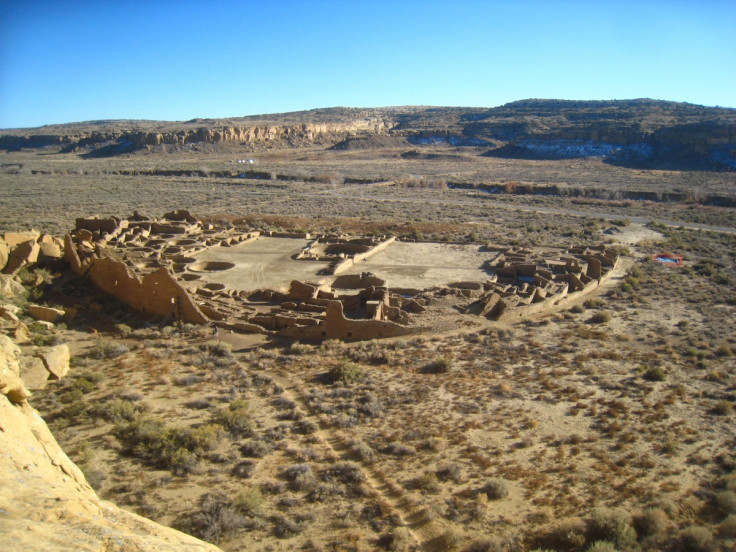Mystery behind construction of Ancient Puebloan great houses in Chaco Canyon solved

The monumental great houses constructed by the ancient Puebloan people were made with 240,000 trees transported from forests over 75km (50 miles) away, scientists have discovered. How the vast buildings were made has been a long-standing mystery, with experts debating the origins of the construction timbers for decades.
Now a Unesco World Heritage Site, New Mexico's Chaco Canyon was occupied by Pueblo people for more than 2,000 years. Between 850 and 1250, it was a major centre for culture and had huge public and ceremonial buildings. "It has an ancient urban ceremonial centre that is unlike anything constructed before or since," Unesco noted.
The buildings were sometimes five storeys high and would have had hundreds of rooms with pine roof beams. The great houses were often oriented to solar and lunar directions and were linked by an elaborate road system.
Now, a team from the University of Arizona has analysed tree rings from 170 great house timbers to work out where they might have come from, with their findings suggesting they shifted sourcing from the Zuni Mountains to the Chuska Mountains around the turn of the millennium. The findings were published in the journal PNAS.

"The casual observer will see hundreds and hundreds and hundreds of beams sticking out of the walls. There's wood all over the place in these structures," lead author Christopher Guiterman said. "They're built out of stone and wood."
Using a method called dendroprovenance, the scientists dated samples from the great houses along with wood collected all over the south west by archaeologists over time. Growth rings in trees showed the regional climate, with wider ones showing good growing years and thinner ones indicating poor growth. While the trees from mountain ranges had a similar climate, each range has slightly different conditions. This meant growth patterns in various forests were all different.
To work out the origin of the tree, they compared tree-ring patterns from the beams to those from different mountain ranges. In total, they compared patterns on 170 beams with archived tree-ring patterns from seven nearby mountain ranges. The authors said they were able to determine the source with 90% accuracy.
Findings showed that before 1020, almost all the timber came from the Zuni Mountains –previously unrecognised as a timber source. After 1060, they had switched to harvesting trees from the Chuska Mountains, 75km to the west.

This switch in wood coincided with widespread expansion of the Chacoan culture – including the construction of seven new great houses in the Chaco Core area. "There's a change in the masonry style – the architectural signature of the construction," Guiterman said. "There's a massive increase in the amount of construction – about half of 'downtown Chaco' houses were built at the time the wood started coming from the Chuska Mountains. We're learning more and more about what these people did so long ago and how they utilised and interacted with their environment."
Eventually, the great houses were abandoned. It has been suggested widespread deforestation and drought were factors involved, with the culture serving as a warning for unsustainable land-use practices. However, a 2014 study also published in PNAS suggested this was not the case.
In it, researchers from the University of New Mexico said: "There is no substantive evidence for deforestation at Chaco and no obvious indications that the depopulation of the canyon in the 13th century was caused by any specific cultural practices or natural events.
"Clearly there was a reason why these farming people eventually moved elsewhere, but the archaeological record has not yet produced compelling empirical evidence for what that reason might have been. Until such evidence appears, the legacy of Ancestral Pueblo society in Chaco should not be used as a cautionary story about socioeconomic failures in the modern world."
© Copyright IBTimes 2025. All rights reserved.






















